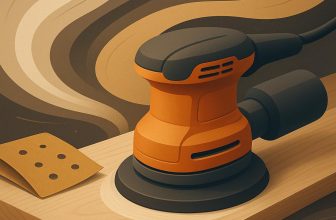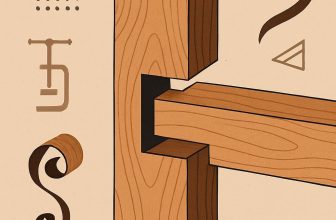
One wrong cut can derail a weekend project adn turn a dream into a cloud of sawdust. This article explains why stopping mistakes before they happen matters to every woodworker-saving material, time, and frustration, and keeping you safe. You'll learn a practical framework for spotting missteps early, from cut setup and tool selection to layout, measurement discipline, and finishing habits. Expect actionable checklists, common pitfall patterns, and simple safeguards you can apply in any project. By the end you'll approach projects with a prevention mindset that boosts confidence, consistency, and craftsmanship.
Preventing common woodworking mistakes through careful planning and measurement
Thoughtful planning is the backbone of precision. Start by defining the project's goals, selecting the right stock, and drafting a complete cut-list before you touch a saw. Lay out your pieces on the bench as if they were finished parts, orienting each board to grain, direction, and natural defects. With a clear plan, you reduce the temptation to improvise under pressure, and you reinforce the mindset that measure twice, cut once is a promise you keep every time you mark a line.
Accurate measurement hinges on reliable tools and disciplined checking. Use a good tape, a square, and a marking gauge to transfer dimensions from the plan to the workpiece. Mark both ends, verify diagonals for squareness, and always subtract kerf when you need an exact finished size. Keep your marks light but precise, and re-check before you cut anywhere near a blade. A simple discipline-trust but verify-helps catch halfway mistakes before they become waste.
| Consideration | What to do |
|---|---|
| Blade kerf | Subtract kerf from finished size |
| Stock orientation | Plan grain direction and ends |
| marking accuracy | Double-mark and re-check |
Plan how pieces will actually come together, not just how they shoudl look. Do a dry run of assembly with inexpensive scrap to verify that edges meet cleanly and that joints align.If a corner seems off, stop and re-measure rather than forcing a misfit.By visualizing the assembly in advance, you reduce slip-ups at the glue-up and set yourself up for precise joins, square corners, and stable structures.
To translate planning into practice, follow these swift steps: 1) create a full cut-list from the plan, labeling every piece; 2) measure each piece twice and mark with a clear reference line; 3) check for square by testing the diagonals and dry-fitting critical joints; 4) cut in a logical sequence, prioritizing edge pieces first and verifying fit after each major cut. Small, purposeful checks save large amounts of scrap and frustration later.
Build Your Dream Workshop on a Budget →
Mastering tool setup and blade selection for accurate cuts
Before you cut, dial in the tool as much as the material. start with a clean, flat workspace, a fence that is square to the blade, and a blade that is sharp and true. Install a fresh blade appropriate for the job, snug the arbor nut, and check for runout-even a small wobble steals accuracy. Make sure a riving knife or splitter is aligned with the blade, and leave the blade guard and anti-kickback pawls in place whenever possible. Set the blade height so it just clears the workpiece by about 1/4 inch; this minimizes exposed teeth, reduces tear-out, and keeps kickback risk lower.use a zero-clearance insert and a push stick or block when feeding stock to protect your hands and support cleaner cuts.
Blade selection matters as much as fence alignment. For rough ripping, a blade with fewer teeth-roughly 24-30 TPI-clears material quickly. For clean crosscuts, a blade with more teeth-roughly 60-80 TPI-produces a smoother edge. A general-purpose or combination blade (around 40-60 TPI) handles mixed tasks with a balance of speed and finish. For plywood or veneer, choose a blade with more teeth and a nicer grind to reduce tear-out. Carbide-tipped blades stay sharp longer and resist heat; thin-kerf blades save material on smaller stock. The kerf and hook angle influence cut quality, so pick a blade that matches your stock and saw motor capacity. Remember: a dull blade or one that's too aggressive for the material fights you more than it helps.
| Blade Type | Teeth | Best For |
|---|---|---|
| Ripping | 24-30 | Cutting along grain; fast rough cuts |
| Crosscut | 60-80 | Cuts across grain; clean edges |
| General/Pv Combination | 40-60 | Mixed tasks |
| Plywood/Veneer | 80-120 | thin sheets; minimal tear-out |
Once you pick a blade, verify the setup. Align the fence with the blade by measuring at multiple points to ensure parallelism, and adjust until you see consistent results. Use a square to verify that the blade is perpendicular to the table, and re-check after changes. Make a quick scrap test cut to confirm edge quality and length before committing to the final piece.for long cuts, support the stock with a push block and a sturdy stand; maintain a steady feed rate and avoid forcing the material.
refine your process with a few ongoing habits: keep blades sharp and clean; wipe away pitch and resin; rotate through a small set of blades for different tasks to avoid cross-use contamination. Use a zero-clearance insert and a sacrificial board to minimize tear-out at the end of cuts. Regularly inspect the fence and miter gauge slots for burrs-tiny misalignments yield big inaccuracies over length. With deliberate blade selection and careful setup, you'll notice improved straightness, fewer burns, and cleaner joints.
Build Your Dream Workshop on a Budget →
Securing work with reliable clamping and effective workholding
Reliable workholding begins with understanding how wood moves and how to counteract it with clever clamping. A stable setup reduces chatter, tear-out, and misaligned cuts, letting you guide the tool smoothly along the grain. Start with a flat, clean bench surface, align the stock so the cut path is accessible, and test the hold by gently nudging the piece before you make a single stroke.
Build a versatile clamping system by pairing different tools for different jobs.Quick-release bar clamps are great for securing long edges,while parallel jaw clamps keep faces square without twisting. Holdfasts bite into a solid bench or a dedicated holdfast board for fast, strong resistance. Combine this with bench dogs or cauls to pin corners and prevent rotation. Always pad contact points with scrap wood or rubber to protect delicate surfaces and avoid impressions.
| Clamping Method | Best Use | Pros | Tips |
|---|---|---|---|
| Holdfasts | Face work on a bench | Fast and strong | Ensure bench has holes; clean burrs |
| Cauls and stop blocks | Routing, planing long edges | Distributes pressure | Glue scraps to create cauls |
| Bar clamps | Edge-to-edge or wide boards | Long reach, high pressure | Protect with scrap stock; avoid overtightening |
| Feather boards | Tablesaw or router | Controls movement | Use proper alignment and anti-kickback pawls |
In practice, set up a repeatable workflow: plane rough edges on the bench, lay out reference marks, position the stock with the cut path clear, then clamp in a sequence that creates a stable “triangular” hold so the wood cannot twist. Such as, when dimensioning a long board, place a clamp at each end and a third clamp mid-span, using a caul or a stop block to maintain planed thickness. For routed or bored work, use a holdfast in combination with a helper block to press the piece firmly against the bench.
Maintenance and safety are integral to reliable workholding. Inspect clamps for burrs, bent bars, or worn pads, and replace any components that show fatigue. use protective padding to avoid dents on delicate surfaces, and avoid overtightening, which can lead to wood bowing or micro-cracks. Keep contact surfaces clean from dust and resin, and store clamps in a dry, organized rack so you can reproduce consistent setups on future projects.
Build Your Dream Workshop on a Budget →
Verifying plans and dimensions to stop miscuts before they happen
before you set a saw to stock, commit to a verification routine that aligns plans with reality. Plans are a guide, but lumber rarely comes perfectly to spec. Start by reading the cut list in full, confirming piece names, lengths, and widths, then verify each number against your stock with careful checks. Account for the blade kerf and planned joint allowances so the final assembly adds up. A simple motto to live by: measure twice, cut once.
translate the plan to the work surface with a disciplined workflow: measure stock with a steel tape or calipers,verify thickness,width,and length,and mark reference edges clearly. Check stock for warp, twist, or cupping; correct orientation for each piece before mounting on the fence.Use stop blocks and a clean fence reference to prevent drift, and perform a dry-run cut on scrap to confirm kerf and alignment. If the test piece doesn't fit, stop and re-check the plan and measurements, then adjust as needed.Double-check your setup before committing to final pieces.
| Step | What to verify | Notes |
|---|---|---|
| 1 | Plan vs. stock dimensions (length, width, thickness) | Use calipers for accuracy |
| 2 | Blade kerf and joint allowances | Subtract kerf were pieces butt together |
| 3 | Stock condition and orientation | Check warp, twist, cupping, and grain direction |
| 4 | Marking and references | Label pieces and edges before cutting |
practice a two-pass cut strategy: run a light first pass to verify alignment, then complete the cut on the final pieces. Label every piece with its intended position and keep offcuts paired with their parts for easy reassembly. With a calm, methodical verification routine, miscuts become far less likely, and your project quality follows suit.
Build Your Dream Workshop on a Budget →
Reducing tear-out through grain awareness and material prep
Reducing tear-out begins long before a blade touches wood. By studying grain orientation and selecting stock with stable, straight grain, you set the stage for clean edges. Inspect each board: the grain should flow lengthwise with minimal figure that invites tear-out.Favor boards whose growth rings run parallel to the intended cut, and rotate stock to keep the most vulnerable faces supported. A quick flex test and a light inspection for checks or loose fibers can reveal trouble spots that would or else catch you by surprise during the cut.
Prep matters almost as much as the blade you choose. Keep tools sharp; dull edges lift fibers and ruin surfaces. For tear-out-prone scenarios, consider scoring the cut on the waste side with a sharp knife or fine blade before removing material with the main tool.use a backer board, or apply masking tape along the cut line, to support fibers on the exit side and minimize tear-out.When routing or dados loom, employ a zero-clearance insert and a sacrificial backing to catch fibers; for long, straight cuts, use a high-quality straight edge to guide the tool. If possible, work with a single clean pass rather than multiple passes.
Understanding grain behavior for each operation helps you plan your sequence and minimize tear-out. The quick guide below highlights typical grain considerations for common tasks and can be a mental checklist as you set up a cut:
| Operation | Grain consideration | Prep tip |
|---|---|---|
| Ripping long boards | Follow the main grain; avoid cuts that cross grain excessively | Sharpen blade; use a backer board if needed |
| Crosscuts and end grain edges | End grain is prone to tear-out; plan to support fibers | Score first; use zero-clearance insert |
| Routing profiles | keep cut path aligned with grain direction | backer material; consider masking tape on edge |
always test on scrap before taking a bite out of your final workpiece. Adjust your grain orientation, refine your technique, and maintain sharp tools throughout the project.With grain awareness and solid prep, you'll dramatically reduce tear-out and end up with cleaner edges and happier results.
Build Your Dream Workshop on a Budget →
Building a proactive workflow with checklists and quality control
Adopting a proactive workflow means weaving checklists and quality control into every corner of the shop. When each project starts with a quick, standardized checklist, you create a safety net that catches missteps before they snowball. This approach turns planning into action: it makes it easy to pause,verify prerequisites,and move forward with confidence.
Build a clear hierarchy for your checklists: a master checklist for the project as a whole, and concise operation checklists for each stage. These prompts keep materials, tools, and setup aligned with the plan, so your cuts stay true and your assemblies fit. Use them as part of your daily ritual rather than afterthoughts.
- Pre-job setup: Inspect stock for defects, confirm grain direction, verify blade sharpness, and ensure safety gear is ready.
- Setup and layout: Measure twice, mark clearly, clamp securely, and verify dust-collection readiness.
- In-process checks: Monitor cut quality, listen for tool chatter, and compare progress against the plan.
- Post-task review: Inspect joints, deburr edges, document deviations, and file away photos for reference.
A quick-reference supports decision-making at a glance. The table below distills the key stages,focus areas,and the sign-off you should expect at each gate,making it easy for the whole shop to stay in sync.
| Stage | Focus area | Sign-off |
|---|---|---|
| Pre-cut prep | Material condition, grain direction, blade sharpness | Yes/No |
| layout & setup | Accurate measurements, clamps, layout marks | Yes/No |
| In-process | Cut quality, finish readiness, safety | Yes/No |
| Finish & inspection | Joint tightness, surfaces, documentation | Yes/No |
To keep the system durable, assign clear owners for each checklist, encourage quick feedback, and log any deviations along with corrective actions. Regular reviews reveal patterns-detailed notes, photos, and even short video clips can close gaps faster than words alone. When you iterate the checklists based on real shop feedback, you turn quality control from a ritual into a reliable habit that stops mistakes before they happen.
Build Your Dream Workshop on a Budget →
Q&A
What are the most common woodworking mistakes beginners make, and how can I prevent them?
Common mistakes include measurement errors, dull blades, and rushing through steps. Prevent them by double-checking all measurements, keeping tools sharp, and following a planned sequence. Also clamp securely and use stop blocks or jigs to ensure consistent cuts.
How can I plan a project to minimize rework and errors?
Start with a clear plan: sketch the layout, make a cut list, and dry-fit parts before gluing. Check grain direction and edge alignments on scrap stock to confirm fits. Leave small allowances where needed and review the plan before you cut.
What techniques help ensure accuracy and clean cuts?
Use sharp blades,set tools correctly,and make test cuts on scrap. Work on a flat,stable surface and employ stop blocks for repeat cuts. Take light passes and verify each fit before proceeding to the next step.
How can I avoid finishing mistakes,like blotches or uneven coating?
Prepare surfaces thoroughly by sanding smooth and cleaning dust. Choose a finish that suits the wood and apply thin,even coats,wiping any excess. allow each coat to dry fully and sand lightly between coats for a durable, even finish.
Insights and Conclusions
Takeaway: pause, plan, and verify at every stage. When you map each cut, double-check measurements, and test-fit before final assembly, you reduce waste, protect tools, and keep projects on track. This matters because for hobbyists and pros alike, momentum without caution can turn small errors into costly delays and frustration. Start small with a project, explore more guides, or apply these checks to your next build.With steady practice, each project becomes smoother and more satisfying. Carry the mindset forward and let your workshop become a place where careful planning turns challenges into opportunities. Keep shaping your craft-one mindful cut at a time.







Great tips! I always find that double-checking measurements and planning each step can save so much time and frustration later on.
Absolutely! I’ve learned that investing a little extra time in preparing your workspace and organizing tools goes a long way in preventing mistakes and ensuring a smoother woodworking experience.
Totally agree, Jennifer! I also emphasize the importance of using proper techniques and ensuring your tools are maintained, as these small details can make a significant difference in the quality of your work.
I couldn’t agree more with everyone’s insights! Additionally, I think keeping a log of your projects can help you identify patterns in your mistakes and improve over time, turning mishaps into learning opportunities.
I completely agree with everyone here! I’ve found that taking the time to research and understand the specific properties of the wood you’re using can greatly reduce errors, as different woods can behave quite differently during the machining and finishing processes.
I completely resonate with all the previous comments! One additional tip I can offer is to practice on scrap wood before working on your actual project-this not only helps you refine your techniques but also allows you to troubleshoot potential issues without the pressure of ruining your main materials.
Great insights from everyone! I’d like to add that setting clear goals for each project and breaking them down into smaller, manageable tasks can help keep you focused and minimize errors, as it gives you a roadmap to follow while working.
Absolutely, everyone has made such valuable points! I’d like to add that incorporating a consistent routine for measuring and marking can help prevent miscalculations that often lead to costly mistakes, ensuring that every cut and joint is as accurate as possible before you even pick up the saw.
I wholeheartedly support all these fantastic suggestions! I’d also recommend investing in high-quality tools and maintaining them regularly; having well-calibrated and sharp tools can significantly enhance your precision and control, helping you avoid those common pitfalls that many woodworkers face.
I love all these suggestions! I’d like to emphasize the importance of patience in woodworking; taking the time to plan your projects, double-check your measurements, and not rushing through tasks can really help you avoid those common mistakes that can be easily prevented.
Fantastic advice from everyone here! I’d like to stress the importance of thoroughly understanding your materials; each type of wood behaves differently, and familiarizing yourself with their properties can help prevent mistakes related to warping, splitting, or incorrect joinery, leading to a more successful project overall.
I completely agree with all the great advice shared here! One thing I’d like to mention is the value of practicing your skills on scrap wood before tackling a bigger project; this can help you refine your techniques and troubleshoot potential issues in a low-pressure environment, ultimately saving time and materials down the line.
Great insights from everyone! I’d like to add that keeping a tidy and organized workspace is crucial; it not only boosts efficiency but also reduces the likelihood of losing tools or materials and helps you focus better, which in turn minimizes the chances of making common errors while working on your projects.
Absolutely love the discussions happening here! I want to highlight the significance of keeping a detailed project journal; documenting your processes, mistakes, and lessons learned can be invaluable for future projects, allowing you to continuously improve and avoid repeating the same errors, which is essential in refining your woodworking skills.
What an amazing exchange of ideas! I’d like to emphasize the role of using quality tools; investing in the right equipment not only enhances your craftsmanship but also reduces the likelihood of mistakes that can arise from using subpar tools, ensuring better accuracy and finish in your woodworking projects.
I’m loving the insights shared so far! I’d like to add that setting clear, specific goals for each woodworking project can greatly help in preventing mistakes; having a well-defined plan gives you direction and helps you stay focused on each step, allowing for a more structured approach that minimizes the chances of errors as you progress.
Fantastic discussion everyone! I’d like to add the importance of taking regular breaks while working; stepping away allows you to clear your mind, check your work with fresh eyes, and often prevents hasty mistakes caused by fatigue or frustration, leading to a more enjoyable and productive woodworking experience.
This discussion is so enriching! I’d like to propose the importance of double-checking your measurements before making cuts; a small error can lead to significant issues down the line, and taking a moment to verify your work can save you time and materials in the long run, making your projects much more successful.
This conversation is incredibly insightful! I’d like to add that organizing your workspace can significantly reduce common woodworking mistakes; having a tidy and efficient area not only enhances focus but also minimizes the chances of misplacing tools or materials, helping you maintain a smooth workflow and ultimately leading to more successful projects.